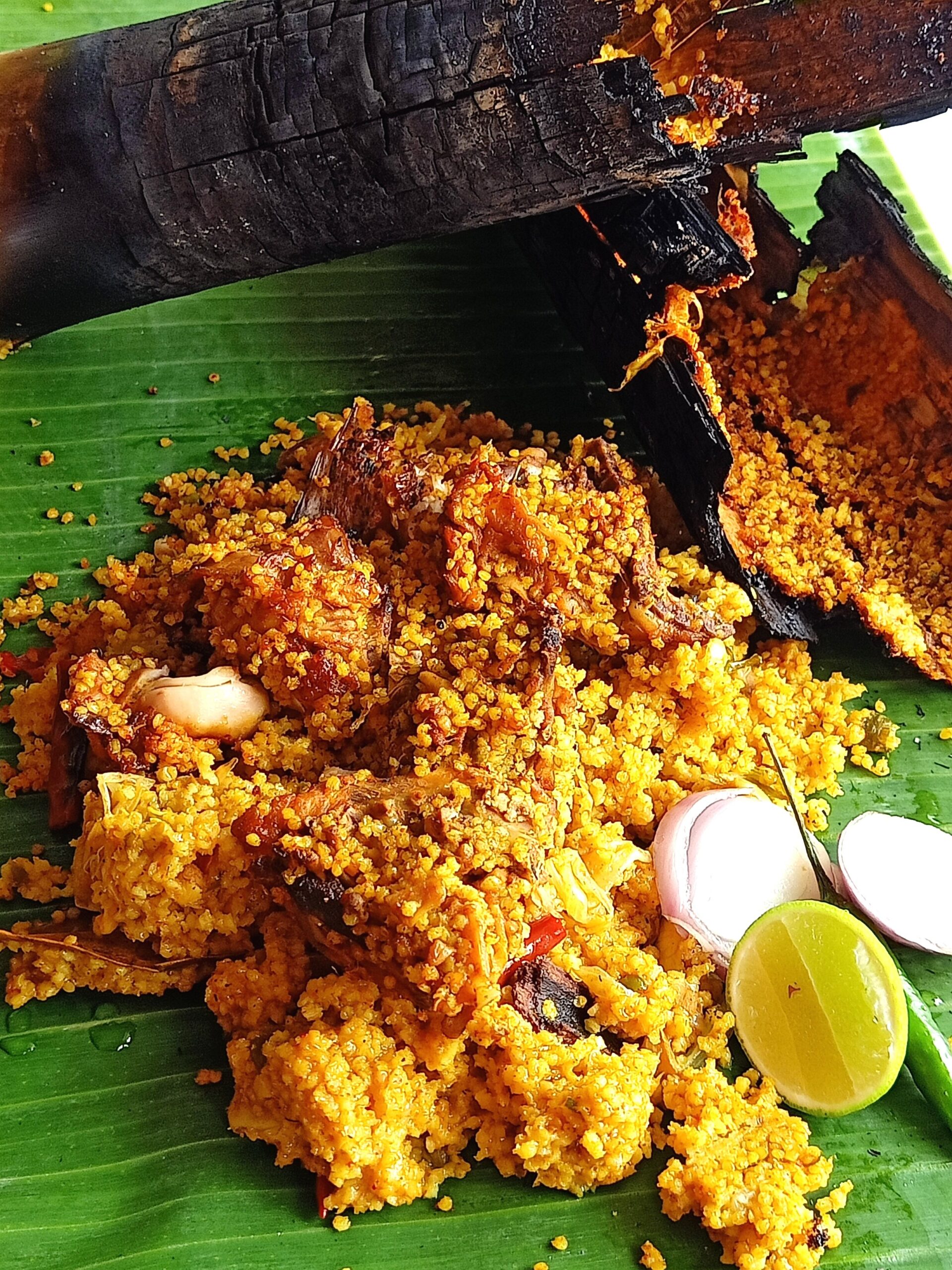
The recipe has been adapted to make the bamboo biryani in home kitchens; without charcoal ovens, or sand and mud pits, which are traditionally used to cook it. The substitution of rice with foxtail millet also means the biryani is gluten-free, making it possible for health-conscious or diabetic people to enjoy this delicacy.
| Salt | To taste |
|---|---|
| Ghee | 5 teaspoons |
| Red chilli powder | ½ teaspoon |
| Turmeric powder | ½ teaspoon |
| Cloves | 3 |
| Black cardamom | 1 |
| Green cardamom | 2 |
| Cinnamon, broken into pieces | 1½ inch |
| Dried red chillies, halved | 2 |
| Bayleaf, halved | 1 |
| Green chillies, roughly pounded | 4 |
| Garlic, roughly pounded | 1 tablespoon |
| Ginger, roughly pounded | 1 tablespoon |
| Medium onion, sliced | 1 |
| Chicken, small curry cut pieces (240 grams in raw weight) | 4 |
| Water | 1 cup |
| Foxtail millet | ½ cup |
| Aluminium foil (to securely wrap base) | optional |
| Banana Leaf | 1 |
| Bamboo hollow | 16.5 inches in length from the sealed baseline, 2.5 inches internal horizontal space |
What You Will Need
Bamboo hollow, spoon, mixing bowls, heat-proof gloves or dishcloths, serving dish, a gas burner usually used by caterers for small parties.
Instructions
Wash and soak the foxtail millet overnight. Strain the soaked foxtail millet the next morning, and remove any excess water. Keep the millet aside in a bowl.
Wash and clean the cut chicken pieces.
Marinate the chicken with the dry as well as whole spices, the pounded ginger, garlic, and green chillies, the sliced onion, two teaspoons of ghee, and salt. Keep aside for at least a few hours, or if possible, overnight.
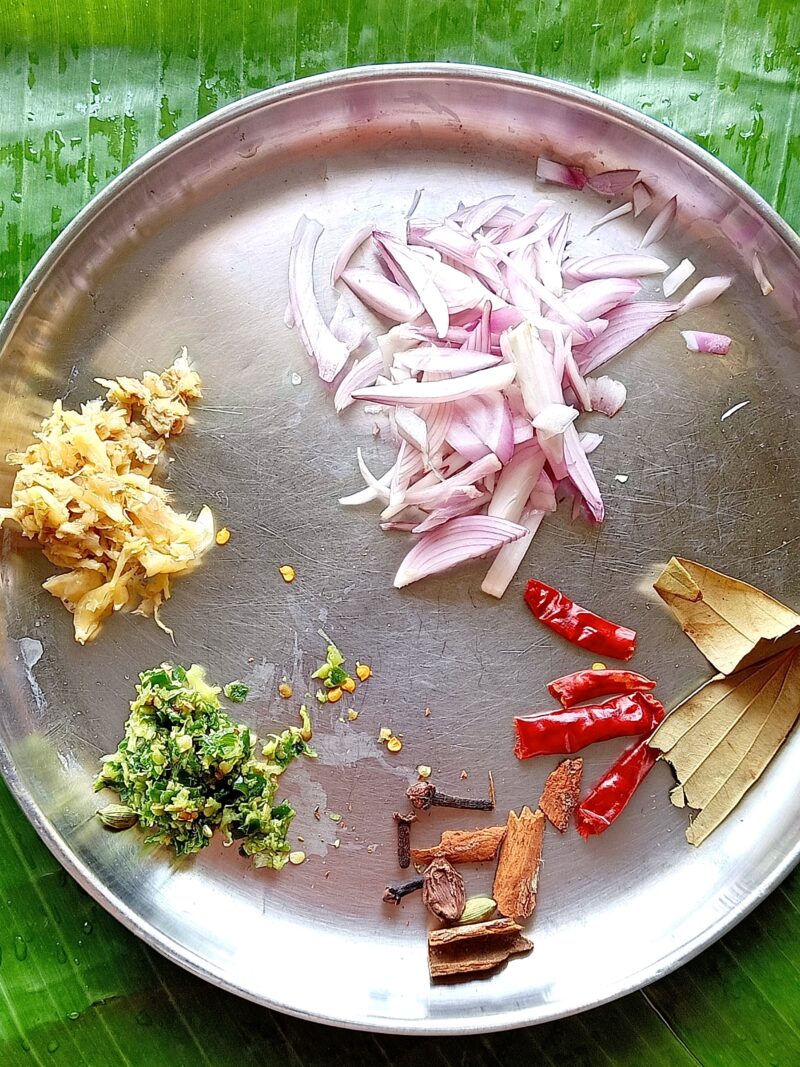
Add the strained millet to the marinated chicken.
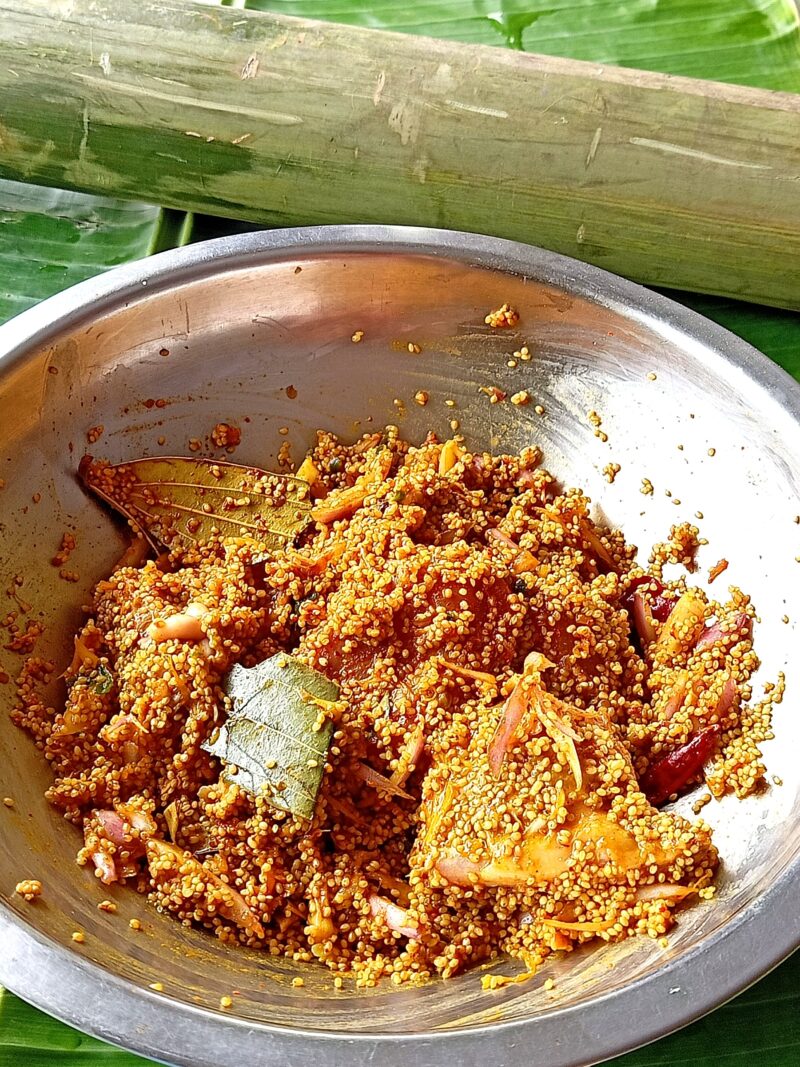
Wash the bamboo hollow properly (inside and out), and pour the remaining three teaspoons of ghee inside the bamboo. Roll the hollow around to cover the insides of the bamboo well.
Spoon the marinated chicken and millet mixture into the bamboo.
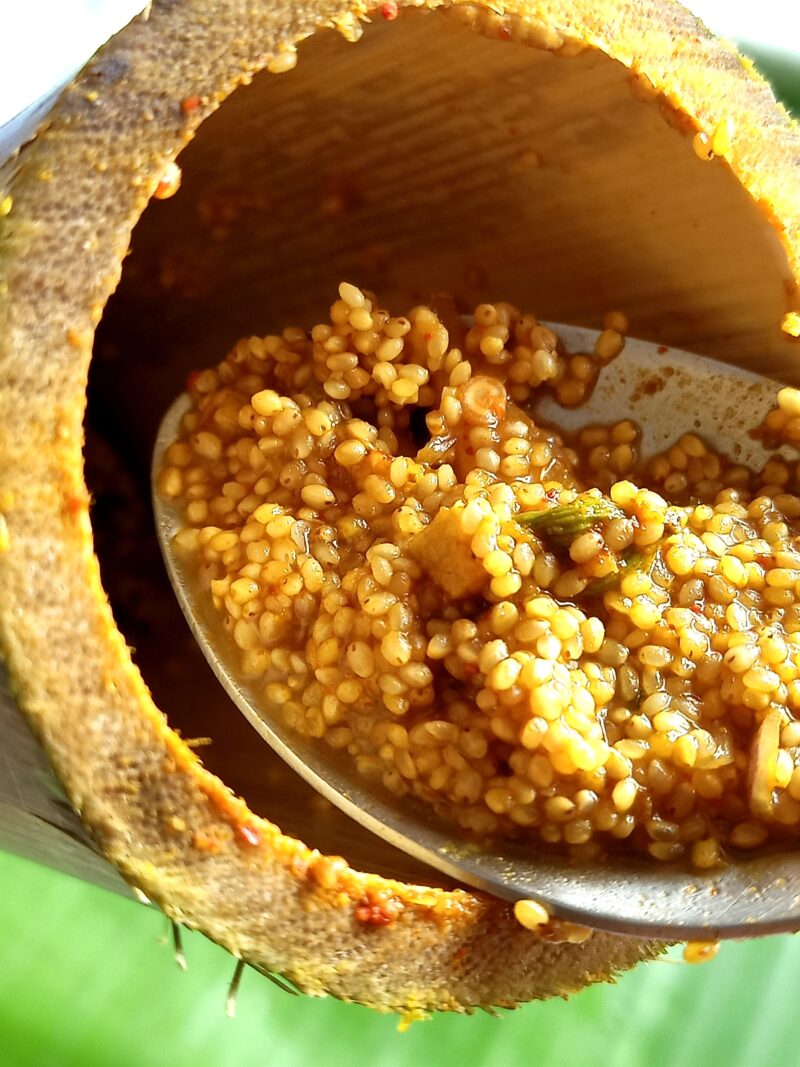
Pour in the water and insert the folded banana leaf into the bamboo to cover the chicken and millet mixture.
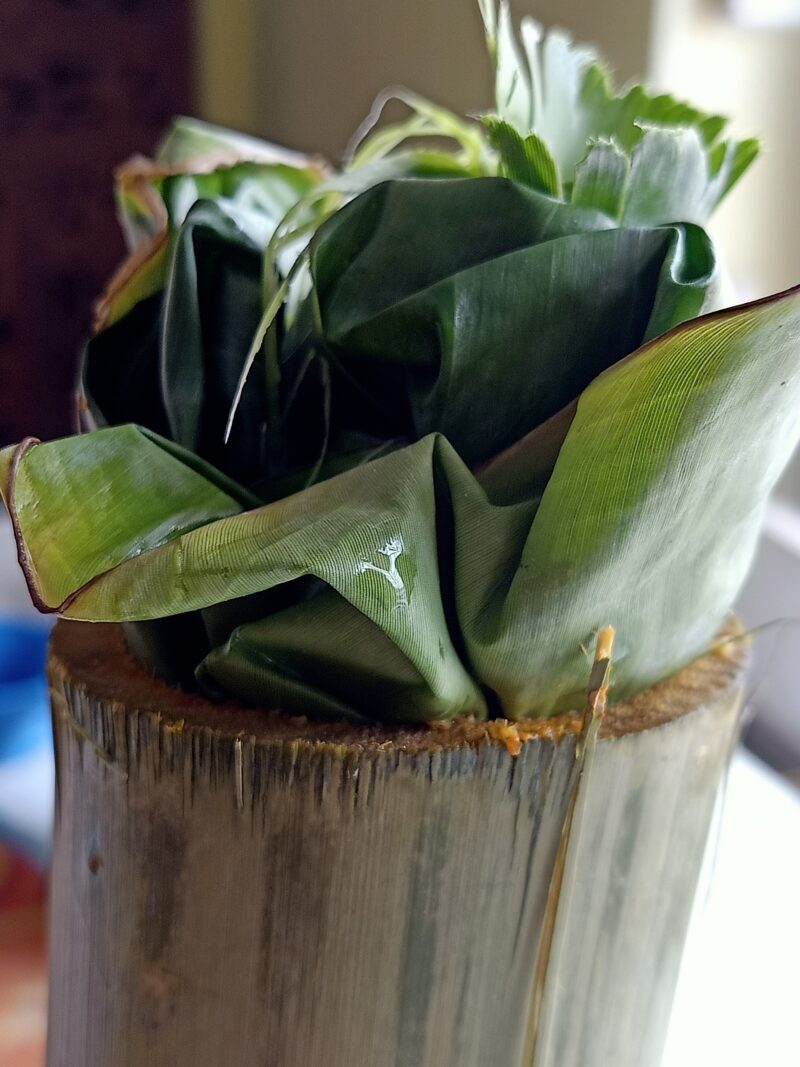
To double seal the mouth of the bamboo, use the aluminium foil and wrap it tightly over the banana leaf. This is optional.
Light the burner of the stove. Keep the flame medium-high.
Carefully slide the filled bamboo over the flame, and rest the base on the lower iron rod of the burner. The top of the bamboo should rest on the top grill of the burner.
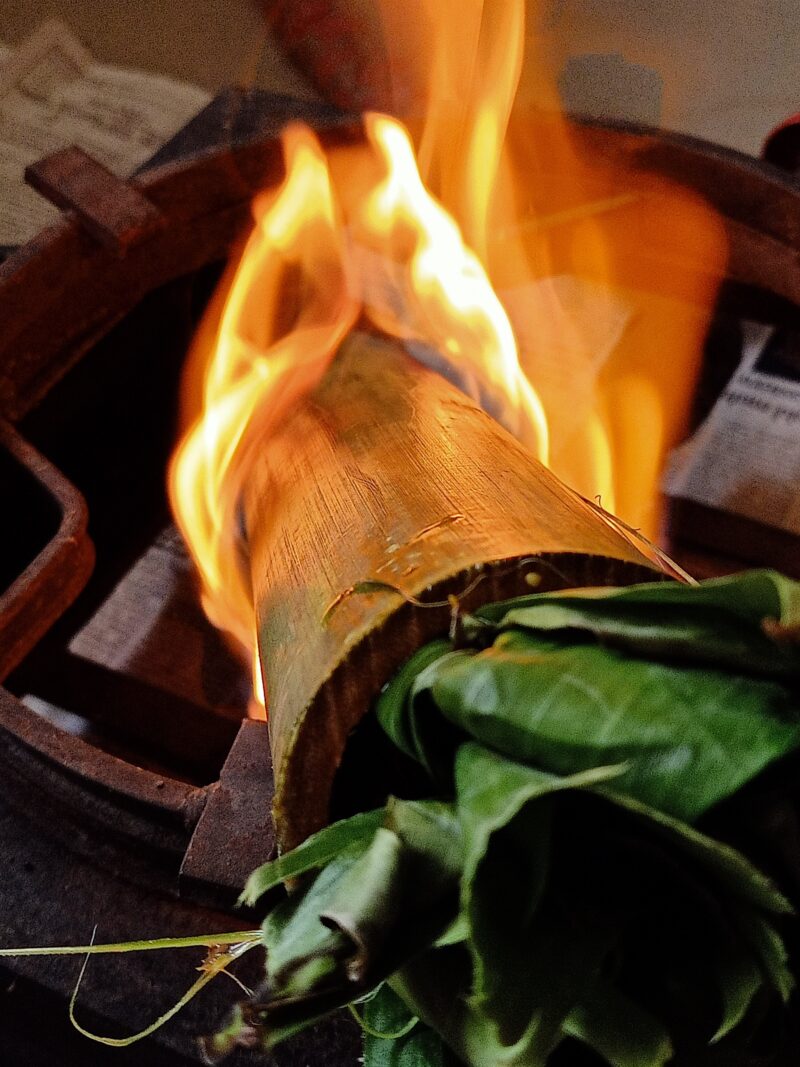
Carefully rotate the bamboo every five minutes, so all sides of the bamboo are burnt well. Keep dishcloths handy, or wear heat-proof gloves to hold and turn the bamboo.
The bamboo hollow will get extremely hot, and needs to be handled with utmost care during this process.
Reduce the burner flame to low after 15 minutes, and let the bamboo and its contents cook for another 25 to 30 minutes, turning it carefully every five minutes or so.
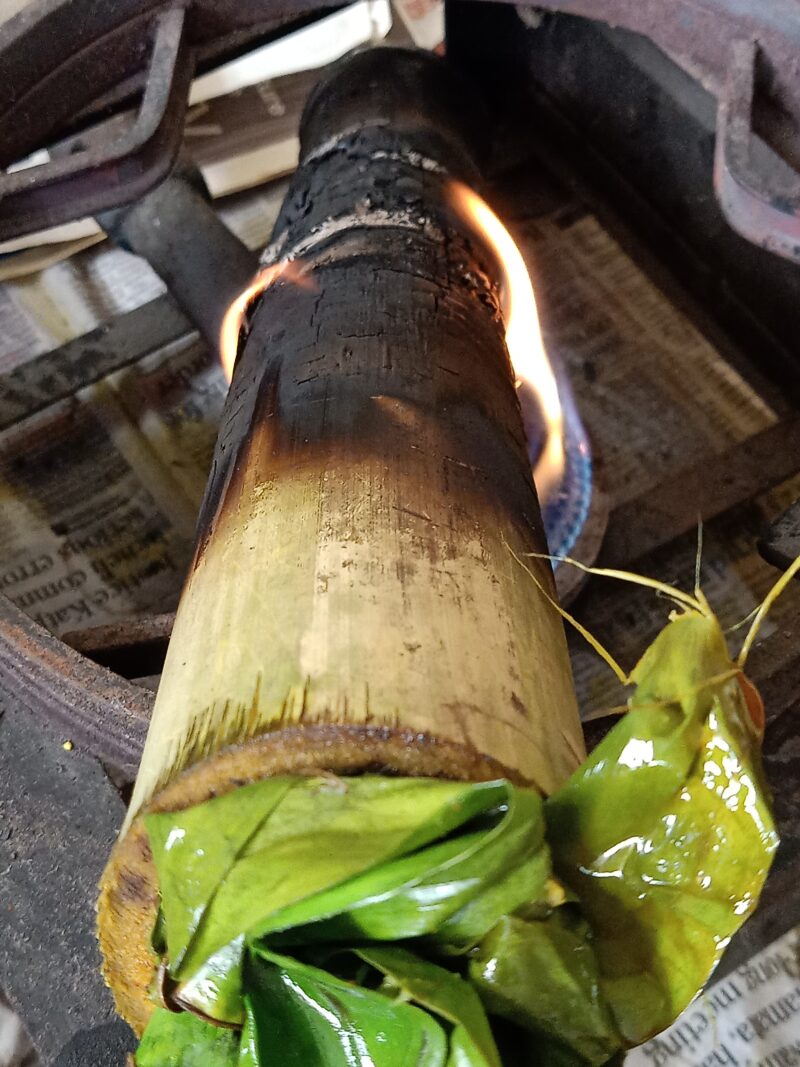
Switch off the flame, and take the bamboo off the burner. Let it rest for 10 to 15 minutes.
Once the bamboo cools, scrape the outside with the back of a knife so the burnt portion falls off. This ensures that the biryani does not have burnt bits of bamboo in it.
Crack open the bamboo, and scrape the cooked chicken and foxtail biryani onto a serving plate or a fresh banana leaf.
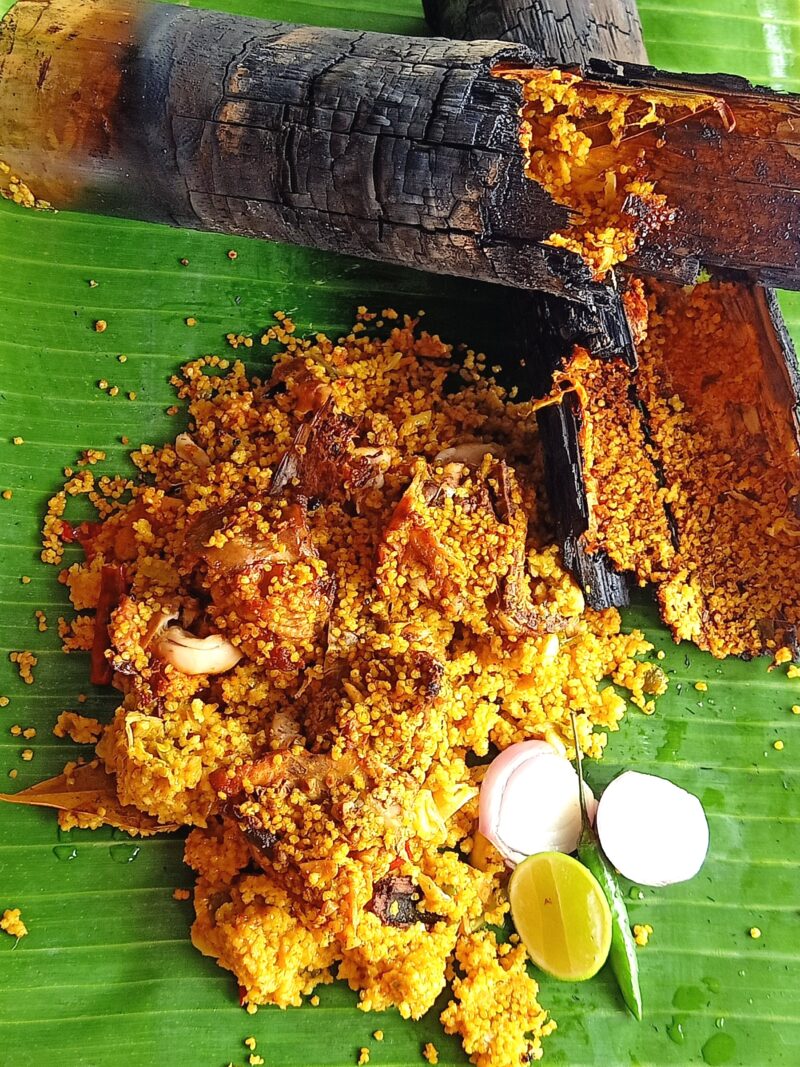
Serve hot with sliced raw onion and lemon wedges, or a simple raita.
Tips
The bamboo hollow needs to be turned with patience and care as it can slip from your hand while moving and resting it on the burner frame.
Variations
You can add fresh herbs like coriander and mint leaves to the marinade if desired.
The raw sliced onion in the marinade can be substituted with fried onion, and the oil used to fry the onion can also be added to the marinade instead of ghee to enhance its flavour.
Yoghurt can also be added to the marinade for a richer preparation.
Sayani Sengupta is a chef volunteer for the MRP cooking lab and a home chef based out of Kolkata. Sayani runs her own food brand, Gooseberri, for which she often writes recipes. Her recipes have also featured in Bengali magazines, such as Sananda, as well as other publications like Times of India, Telegraph, and Indulge Express.

This recipe is part of the Millet Revival Project 2023, The Locavore’s modest attempt to demystify cooking with millets, and learn the impact that it has on our ecology. This initiative, in association with Rainmatter Foundation, aims to facilitate the gradual incorporation of millets into our diets, as well as create a space for meaningful conversation and engagement so that we can tap into the resilience of millets while also rediscovering its taste.

Rainmatter Foundation is a non-profit organisation that supports organisations and projects for climate action, a healthier environment, and livelihoods associated with them. The foundation and The Locavore have co-created this Millet Revival Project for a millet-climate outreach campaign for urban consumers. To learn more about the foundation and the other organisations they support, click here.
You must be logged in to rate this recipe.

Sign in with email
